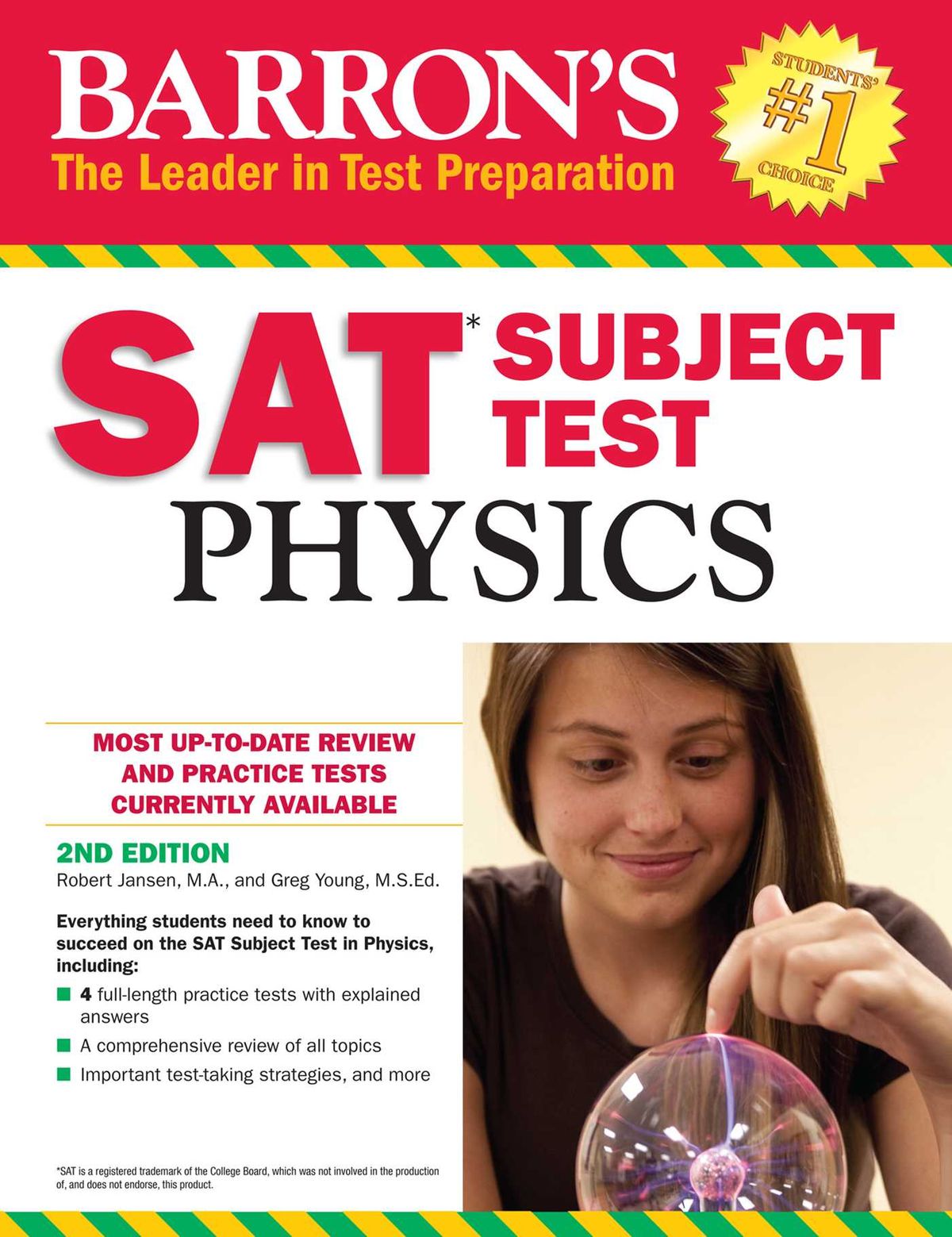For SAT preparation, many students have always been trusting Barron’s products. To get admitted to great schools, one certainly needs to take not only the general SAT but also SAT 2 subject tests.
You will really like how this physics SAT book is divided into sections with examples and problems after each section. It makes studying really easy and nice. All the problems have an explanation, which is perfect for students who want to study by themselves. Diagnostic tests are designed to show students how well are they doing so far and which part do they need to focus on more. Wise usage of this book can guarantee that you pass your physics SAT exams. It is very important to give yourself time and pace accordingly. If you start studying only a week or a few days before the exam with inadequate physics knowledge, chances are, your scores will not be very impressive.
Table of Contents
About Barron’s SAT Subject Test: Physics 2nd Edition PDF
One diagnostic test and three full-length model SAT Subject Tests in Physics reflect the most recent actual tests in length, subject matter, and degree of difficulty. All questions are answered and explained. New self-assessment guides after each test are designed to help test-takers improve their scores. An extensive subject review covers all topics on the SAT Subject Test, including mechanics, thermodynamics, electricity and magnetism, atomic structure, and more. The authors also explain the methodology used in solving physics problems, present a basic math review, provide additional practice questions with answers, and offer test-taking tips.
Barron’s SAT Subject Test: Physics is updated to reflect the most recent exam and features full-length practice tests and detailed subject review.
This edition includes:
- Three full-length practice tests that reflect the format, timing, and difficulty of the actual exam
- One diagnostic test to help pinpoint strengths and weaknesses
- Answers and explanations for all questions
- Extensive subject review of all topics on the test, including mechanics, electricity and magnetism, waves and optics, and thermodynamics
- Appendix with equations, physical constants, and basic math review
- Tips on solving problems quickly and advice on mastering difficult concepts
Table of Contents For Barron’s SAT Subject Test: Physics 2nd Edition PDF
Introduction
Diagnostic Test
1 Conventions and Graphing
2 Vectors
3 Kinematics in One Dimension
4 Kinematics in Two Dimensions
5 Dynamics
6 Circular Motion
7 Energy, Work, and Power
8 Momentum and Impulse
9 Gravity
10 Electric Field
11 Electric Potential
12 Circuit Elements and DC Circuits
13 Magnetism
14 Simple Harmonic Motion
15 Waves
16 Geometric Optics
17 Physical Optics
18 Thermal Properties
19 Thermodynamics
20 Atomic and Quantum Phenomena
21 Nuclear Reactions
22 Relativity
23 Historical Figures and Contemporary Physics
Practice Tests
Appendix I: Key Equations
Appendix II: Physical Constants
Appendix III: Conversion Factors
Glossary
Index
About the Author Of Barron’s SAT Subject Test: Physics 2nd Edition PDF
Robert Jansen teaches Advanced Placement Physics at Aliso Niguel High School in Aliso Viejo, California. He has taught Advanced Placement Physics B since 1998 and the complete Advanced Placement Physics C course, including electricity and magnetism, since 2001. He holds a bachelors degree in psychobiology from the University of California, Los Angeles, and a master’s degree in education from Pepperdine University. He gravitated toward teaching physics due to the challenging material and a sustained belief that physics does not need to be mysterious and difficult, but rather comprehensible and accessible.
Greg Young has been teaching high school science for more than twenty years. He currently teaches Honors Physics and Chemistry at San Clemente High School in San Clemente, California. He holds a bachelor’s degree in biochemistry from the University of California, San Diego, and a master’s degree in science education from USC. Having always been interested in science and how to make it relevant to others, Greg’s interest in teaching is being able to create interactive lessons that engage students in their learning and form a relevant context for difficult concepts in physics and chemistry.
